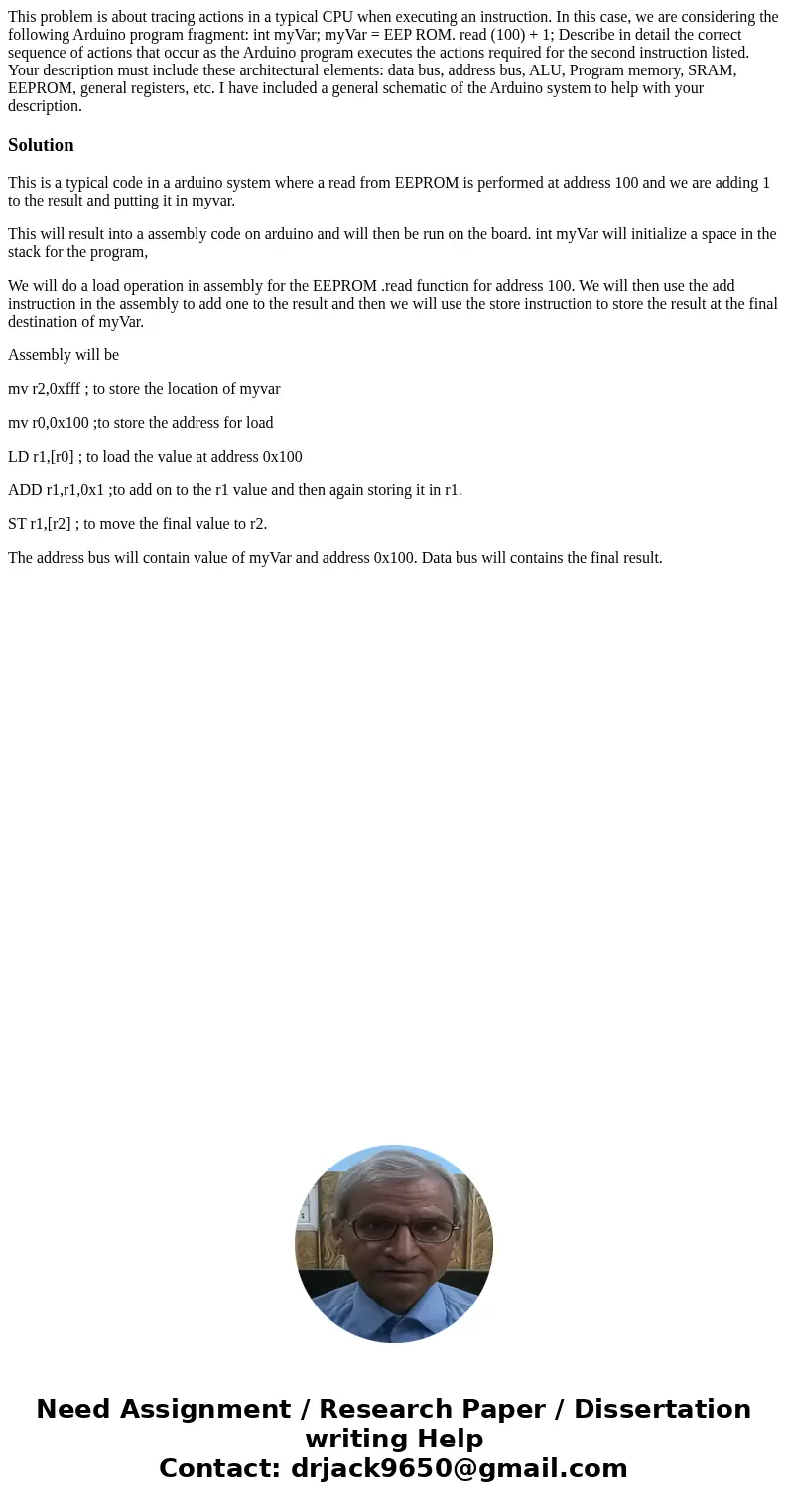This problem is about tracing actions in a typical CPU when
Solution
This is a typical code in a arduino system where a read from EEPROM is performed at address 100 and we are adding 1 to the result and putting it in myvar.
This will result into a assembly code on arduino and will then be run on the board. int myVar will initialize a space in the stack for the program,
We will do a load operation in assembly for the EEPROM .read function for address 100. We will then use the add instruction in the assembly to add one to the result and then we will use the store instruction to store the result at the final destination of myVar.
Assembly will be
mv r2,0xfff ; to store the location of myvar
mv r0,0x100 ;to store the address for load
LD r1,[r0] ; to load the value at address 0x100
ADD r1,r1,0x1 ;to add on to the r1 value and then again storing it in r1.
ST r1,[r2] ; to move the final value to r2.
The address bus will contain value of myVar and address 0x100. Data bus will contains the final result.

 Homework Sourse
Homework Sourse